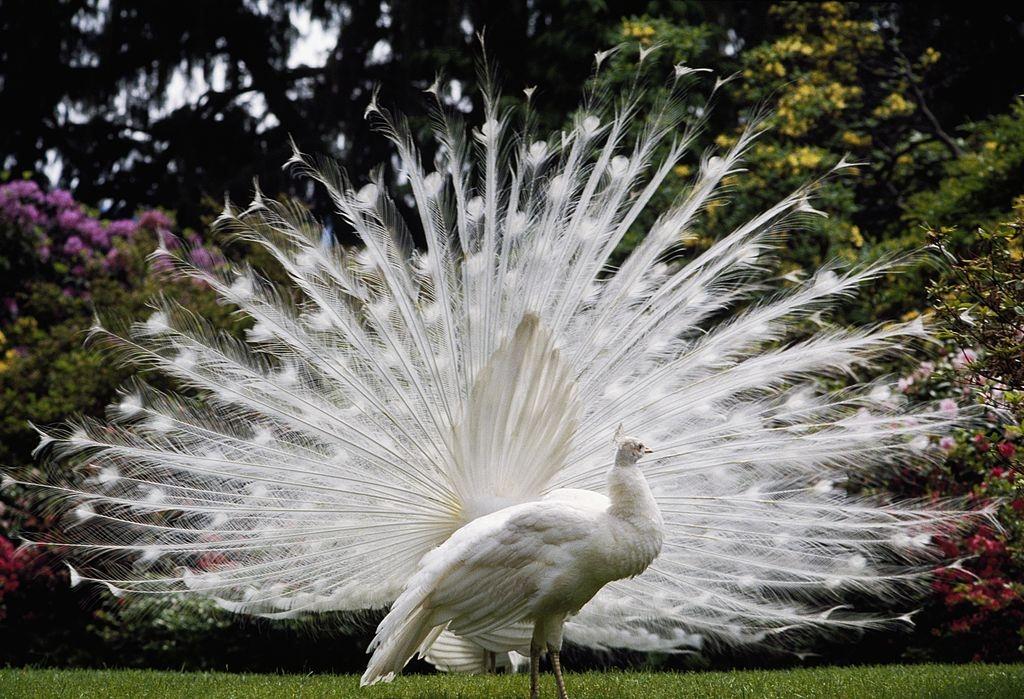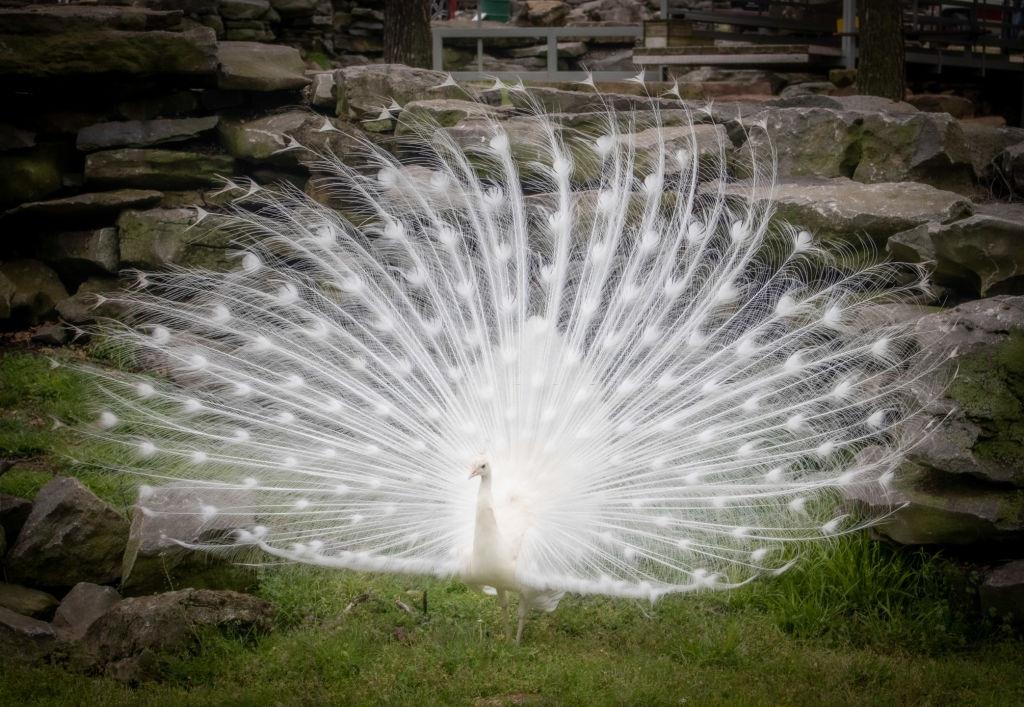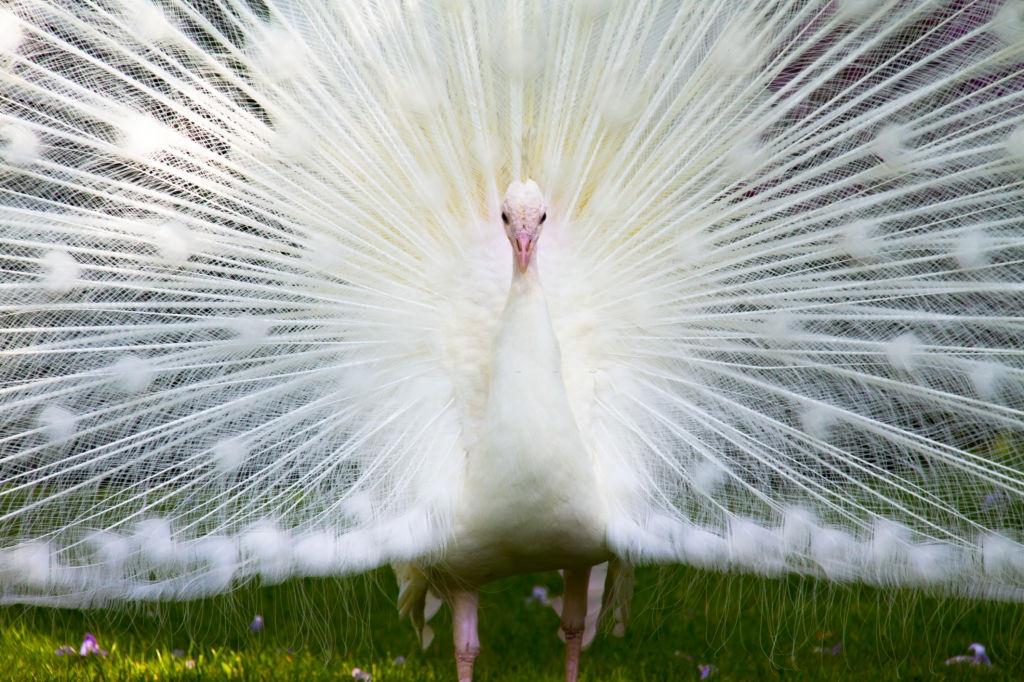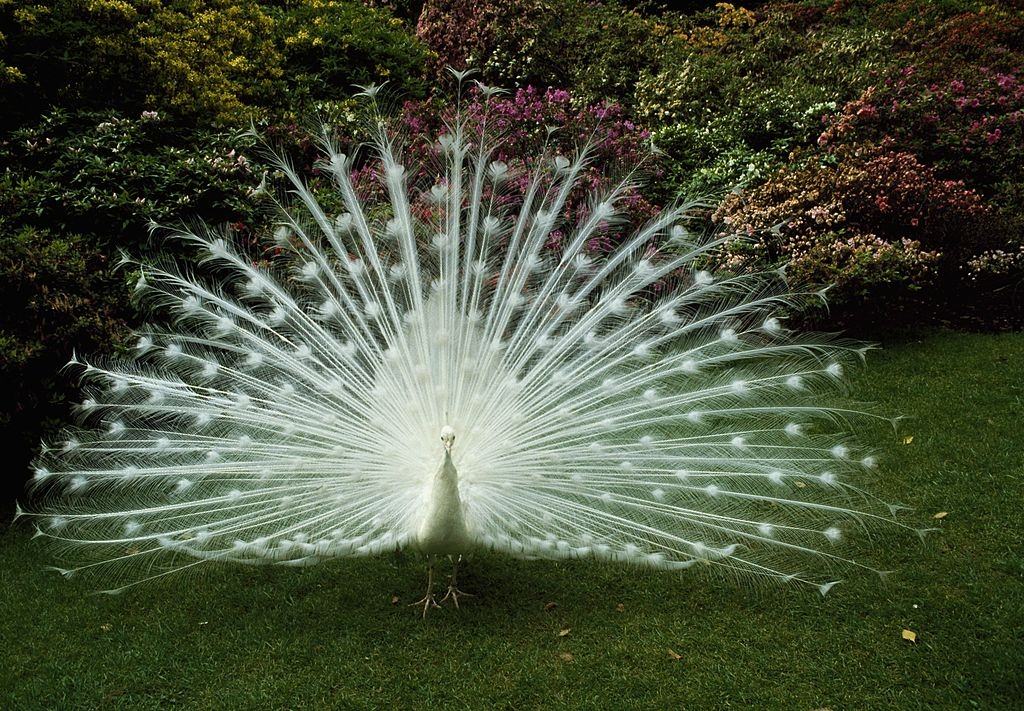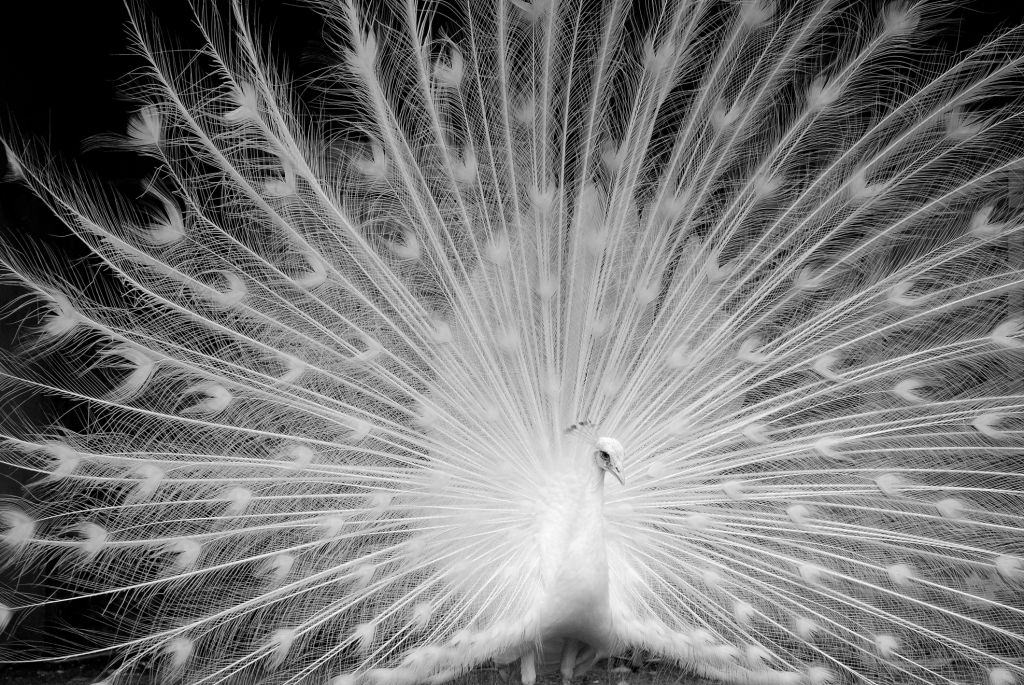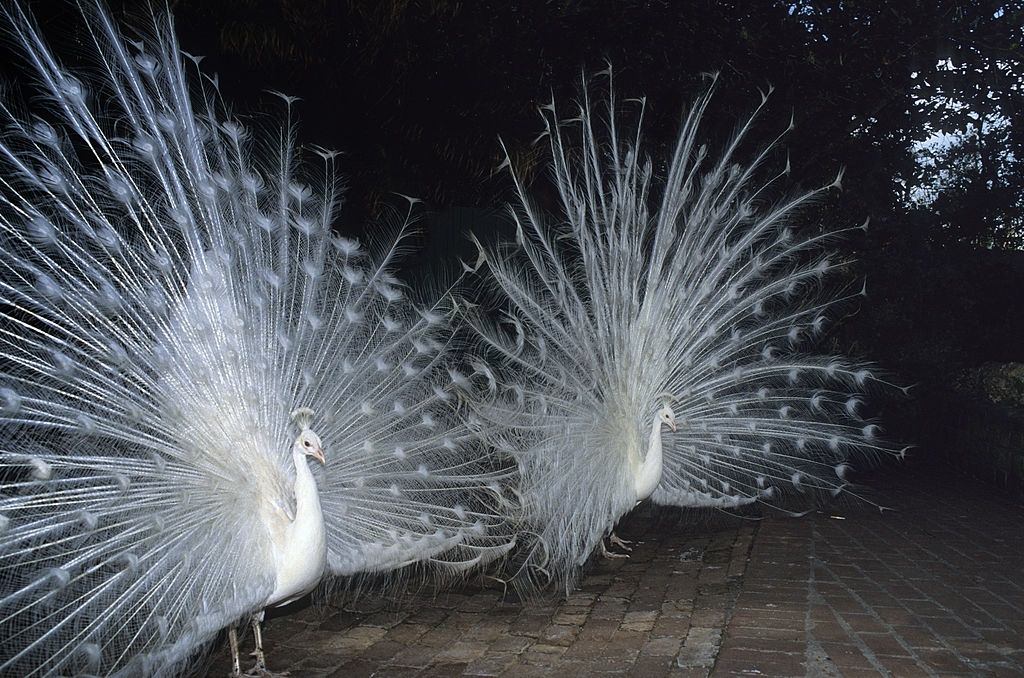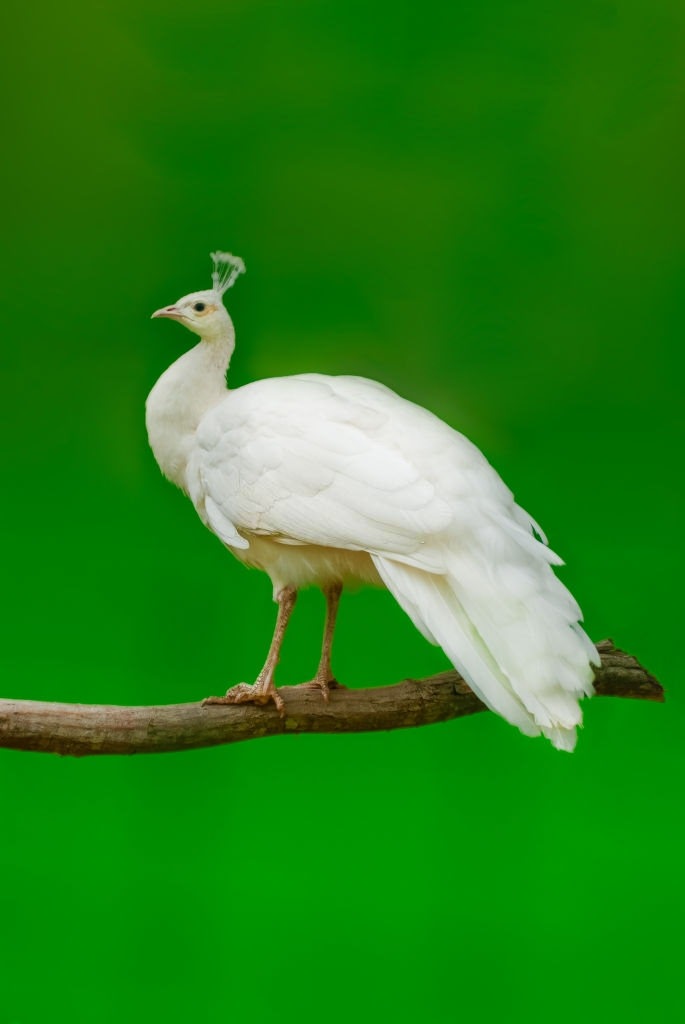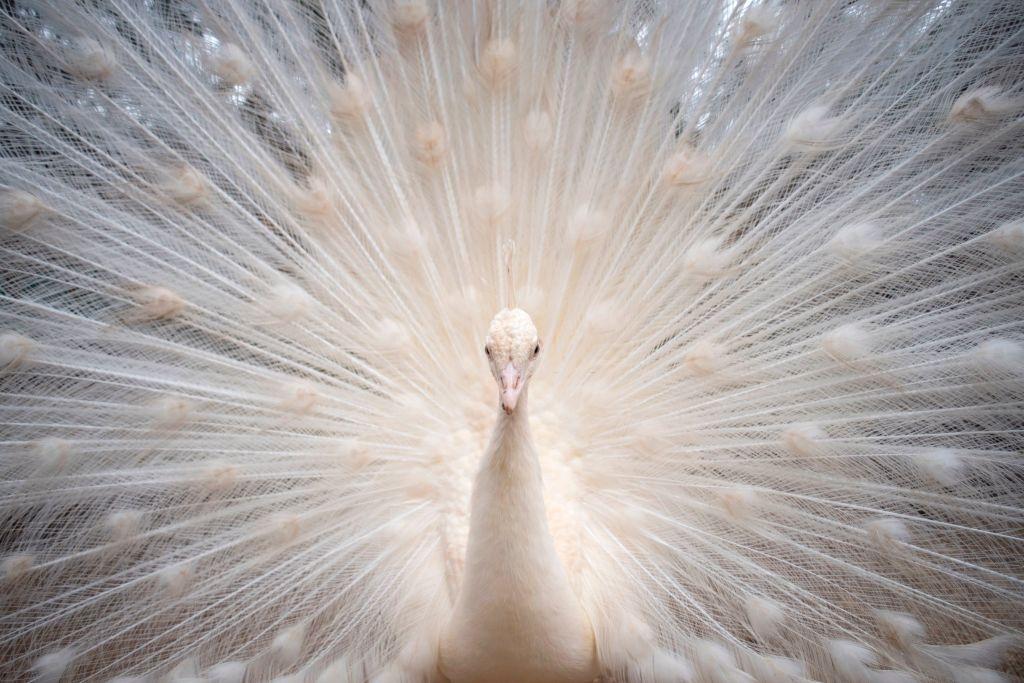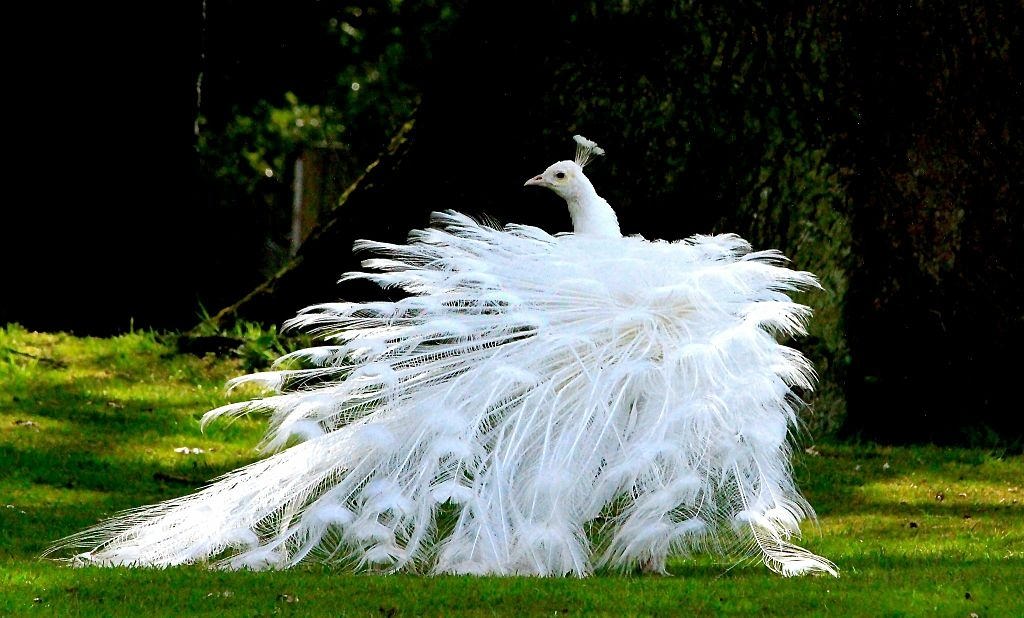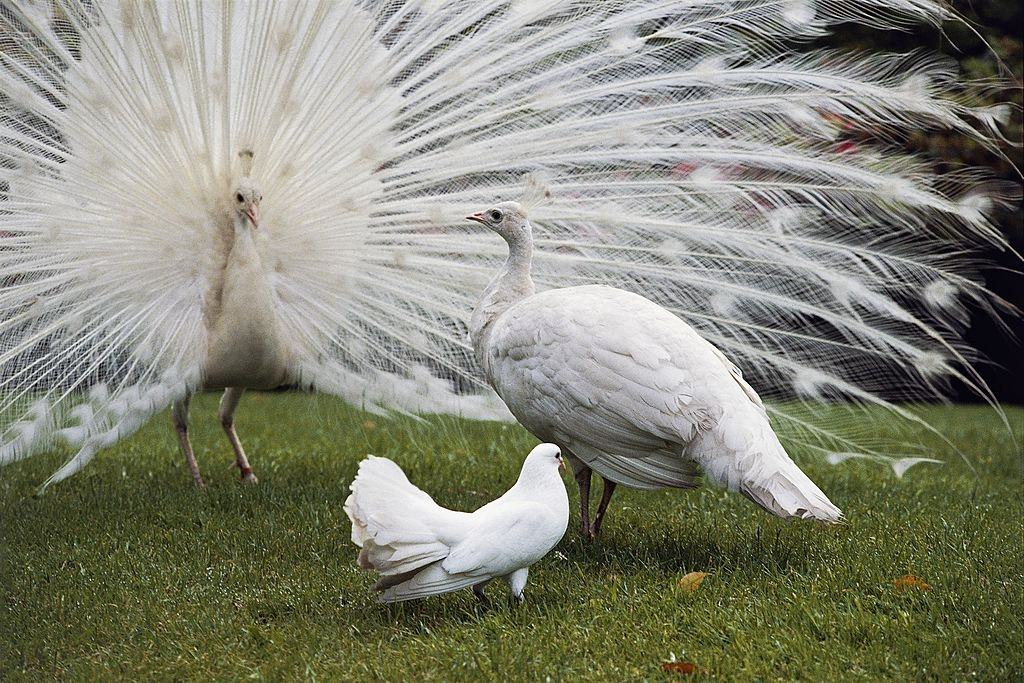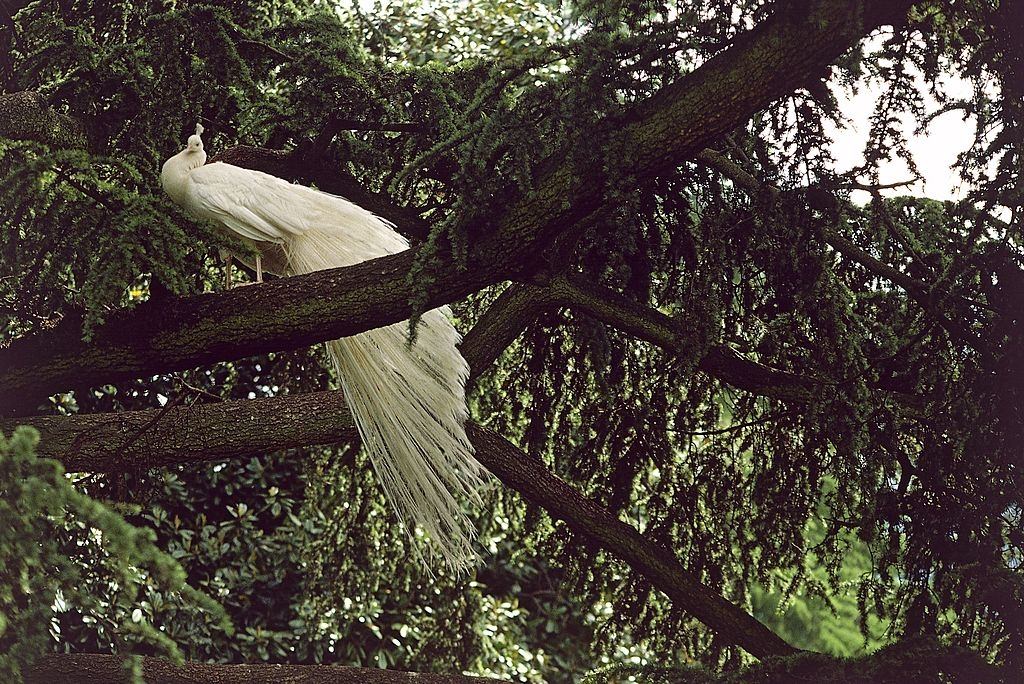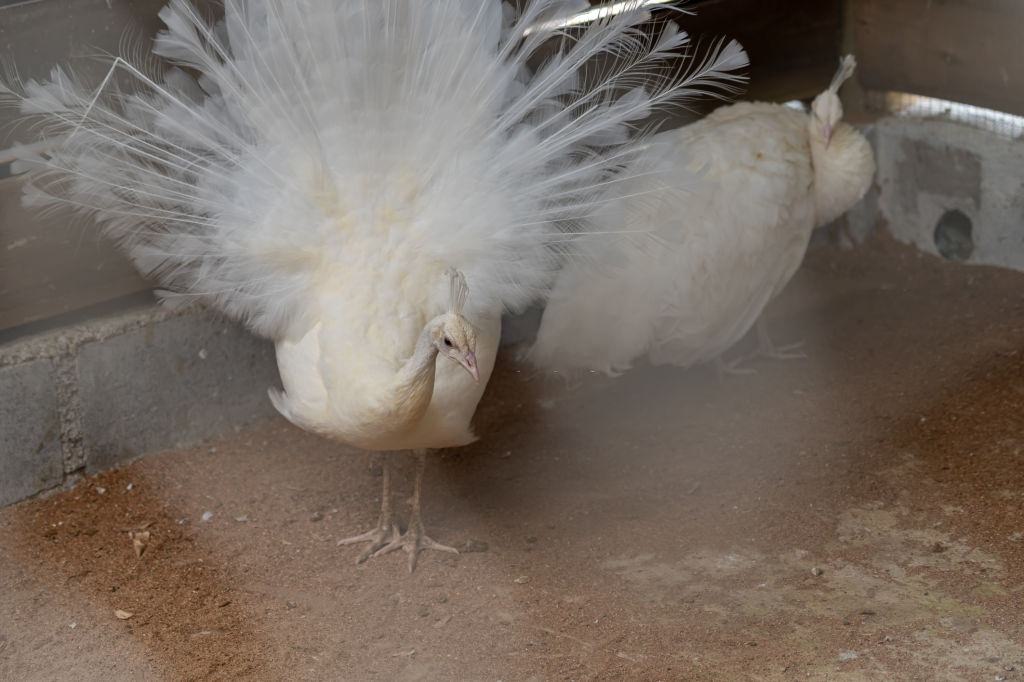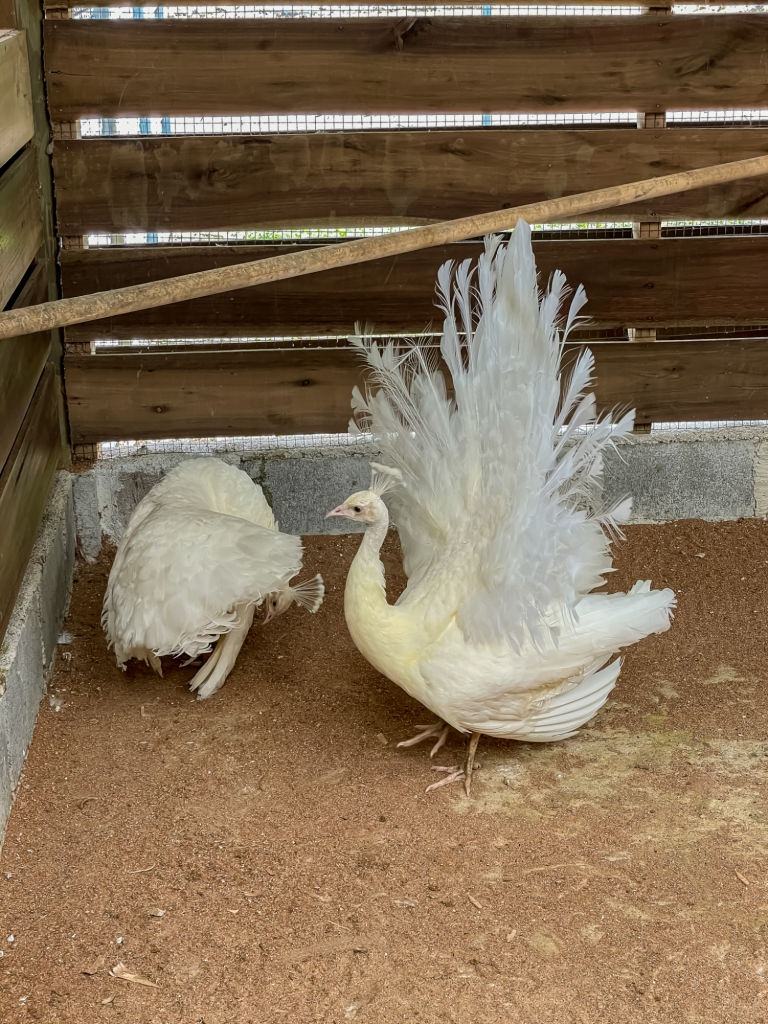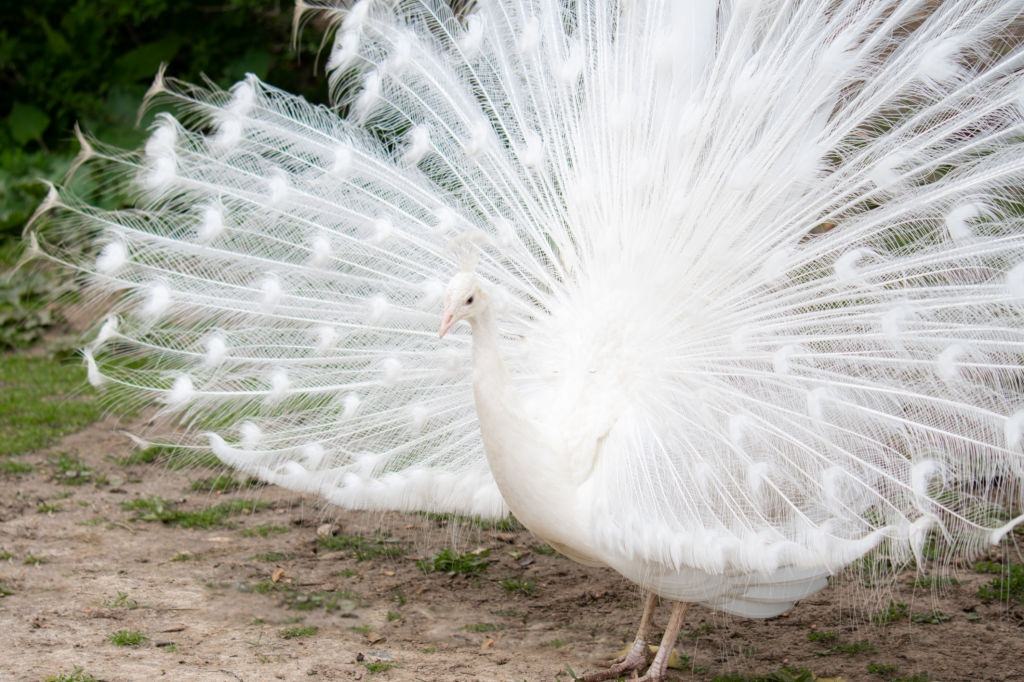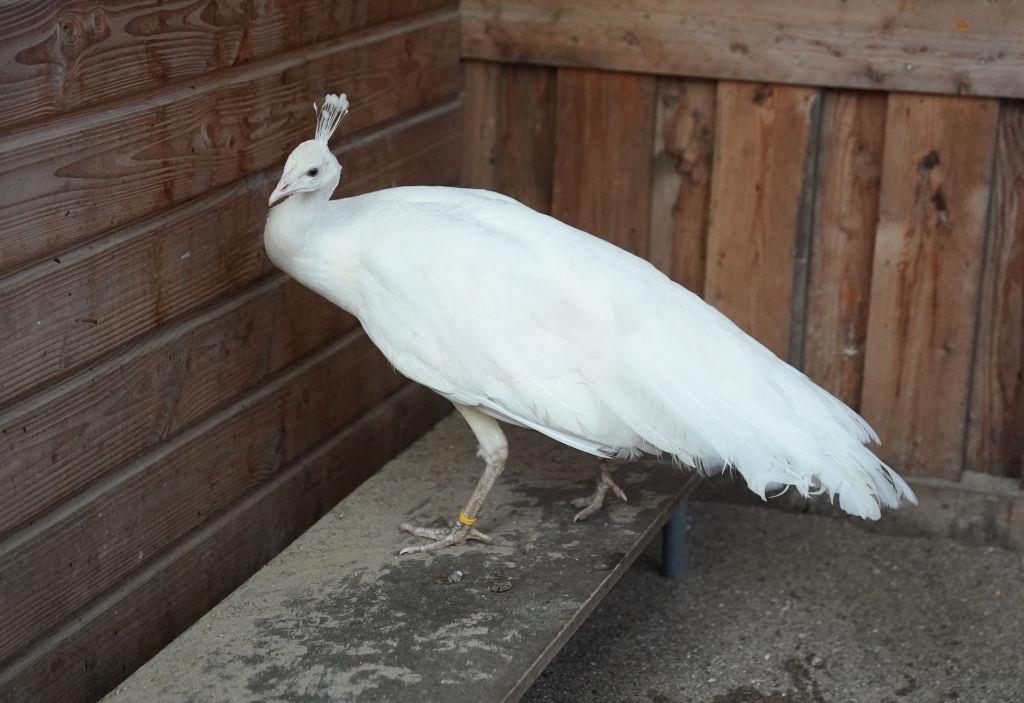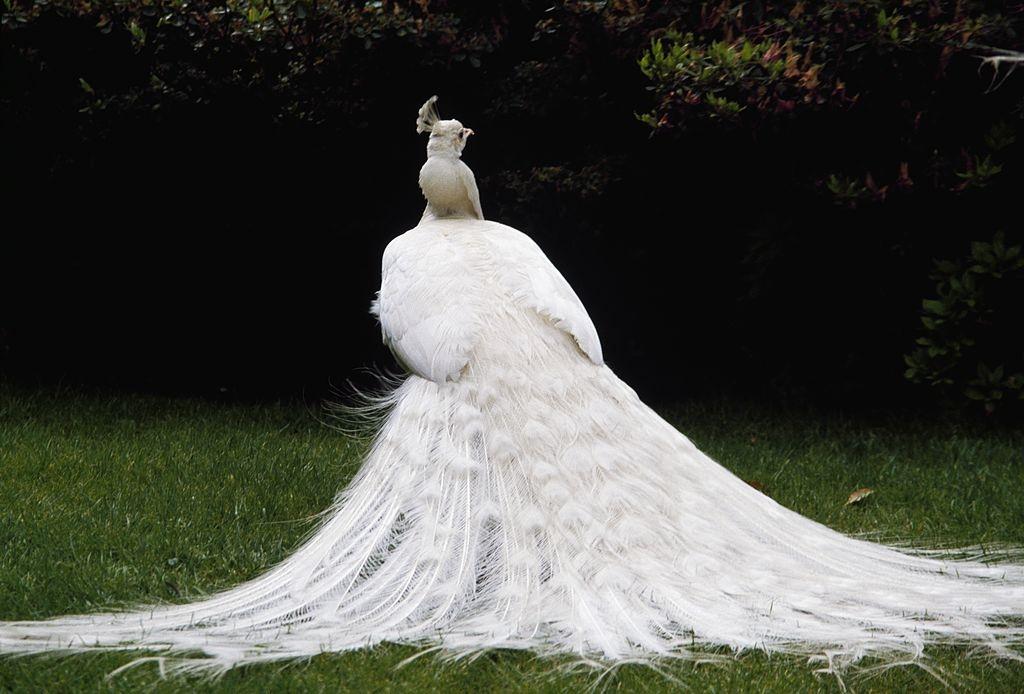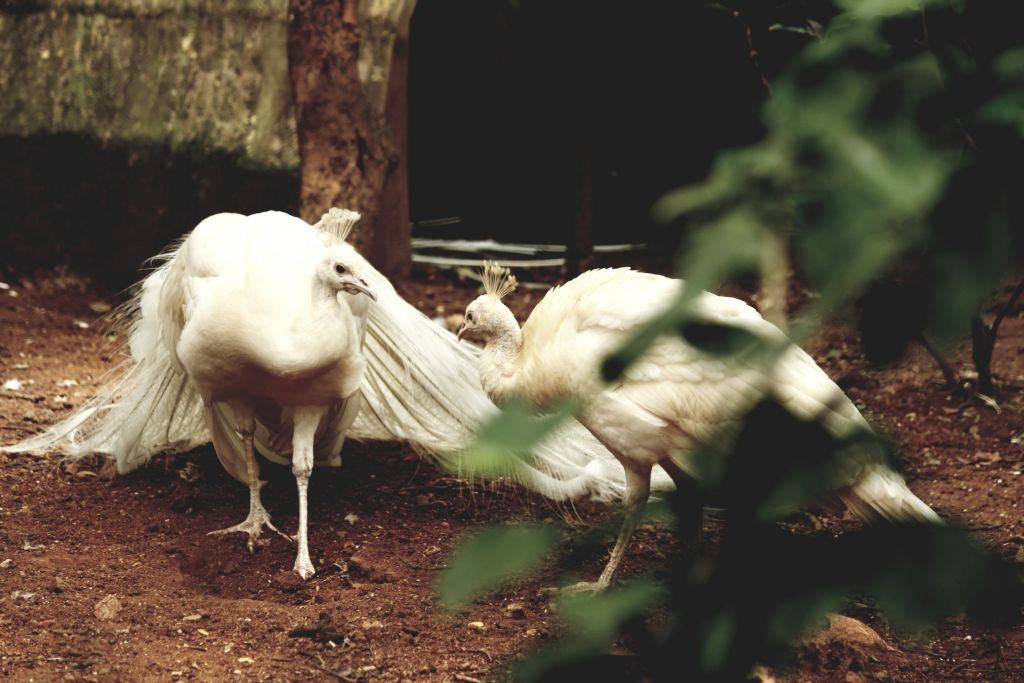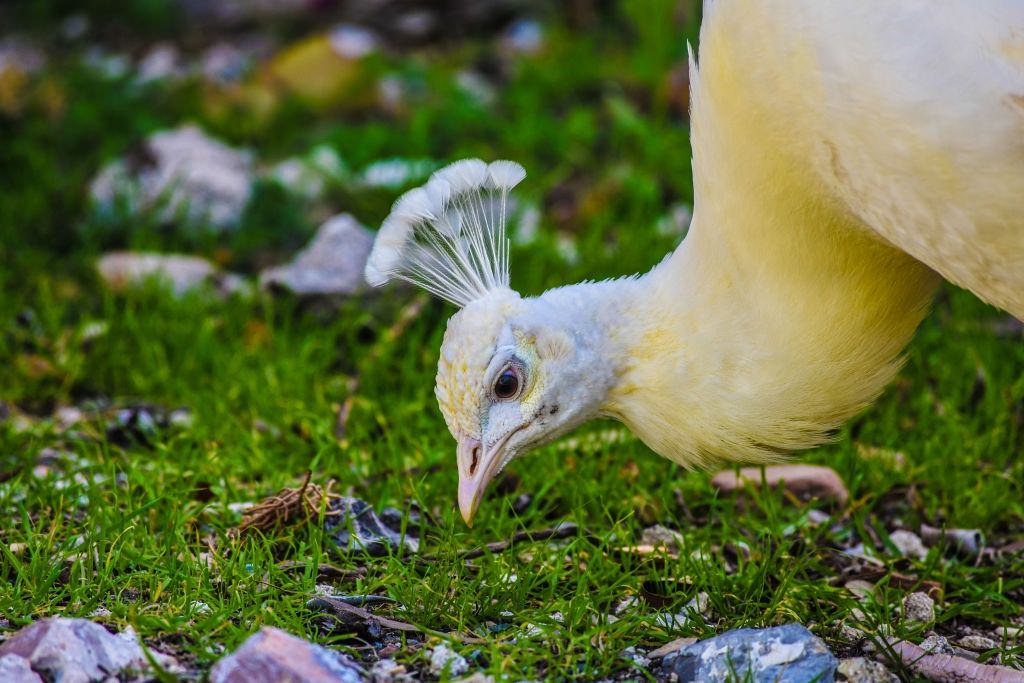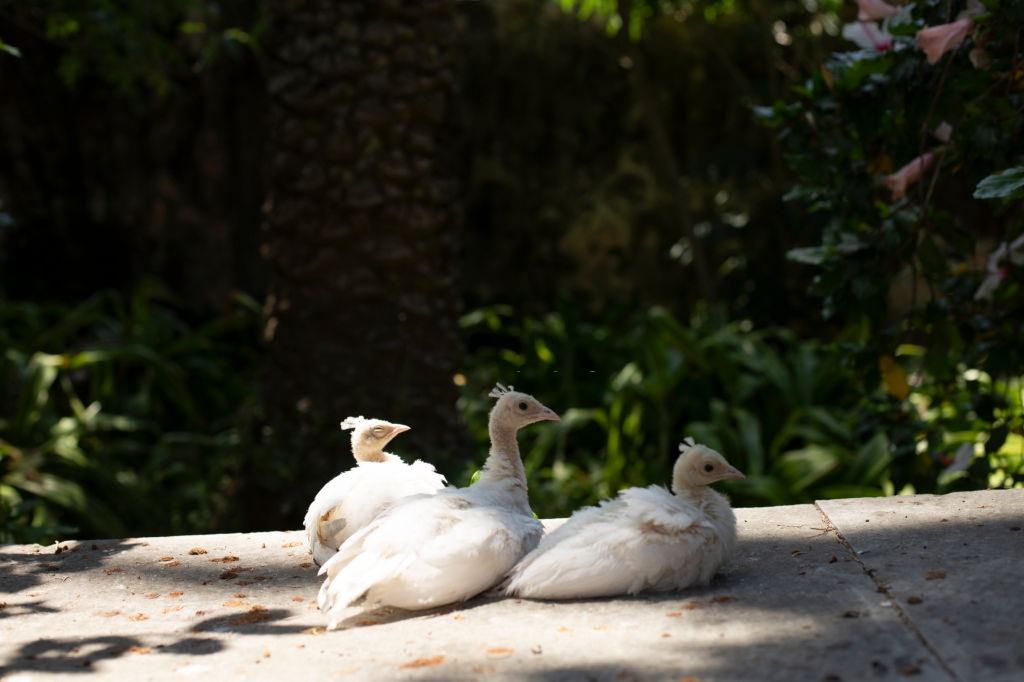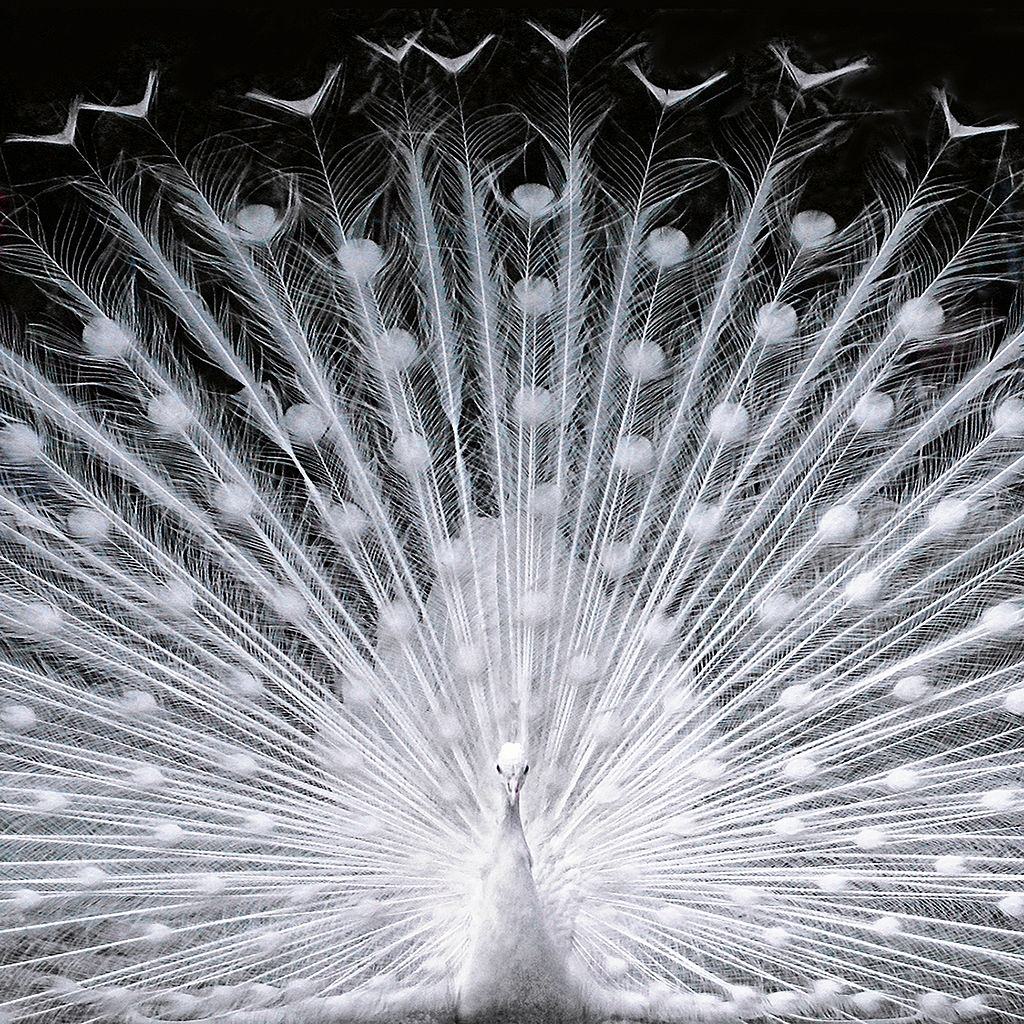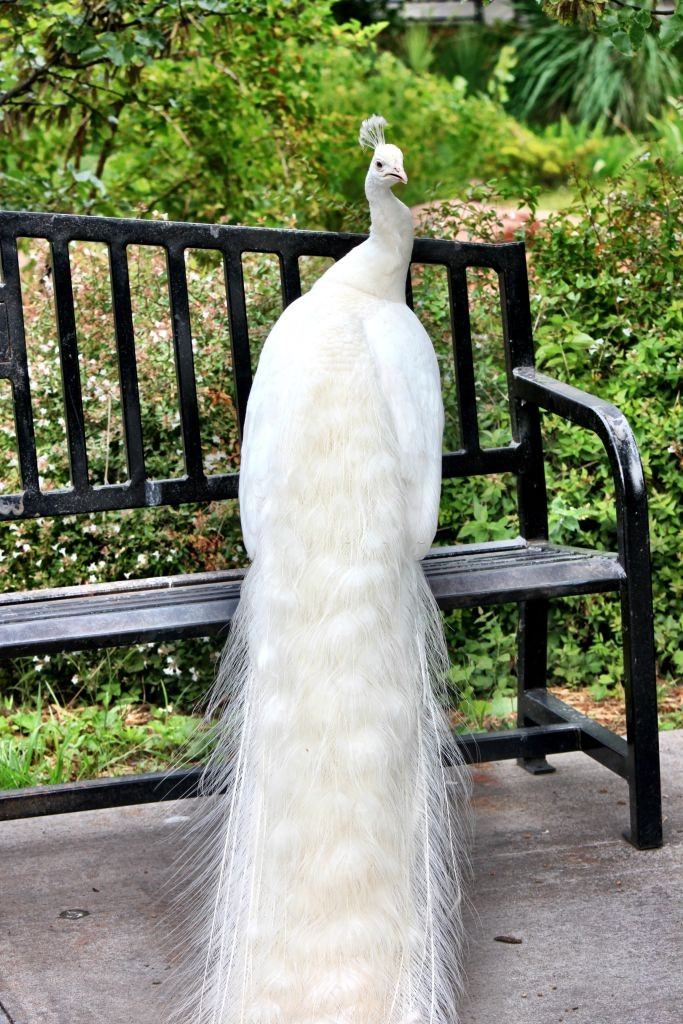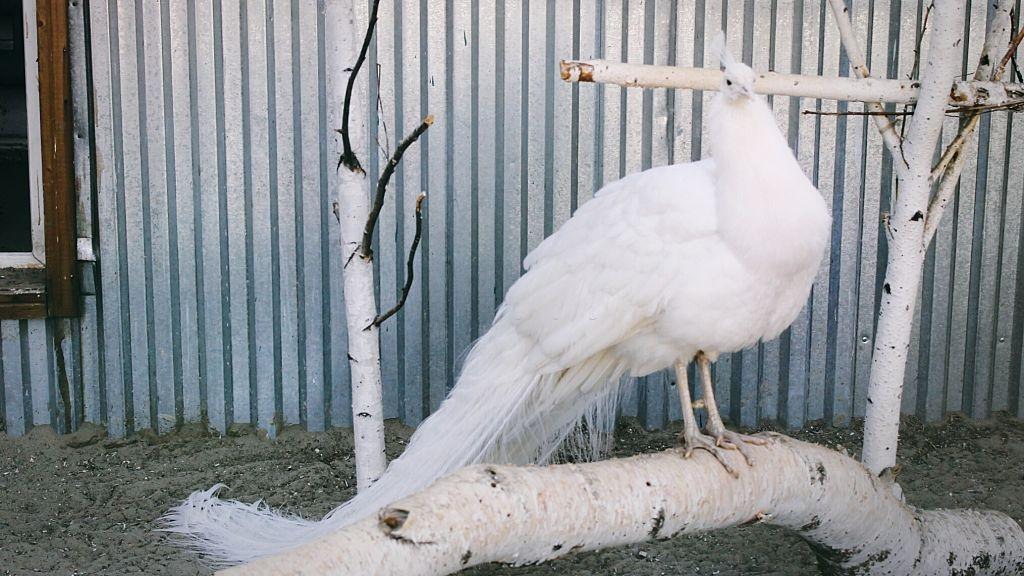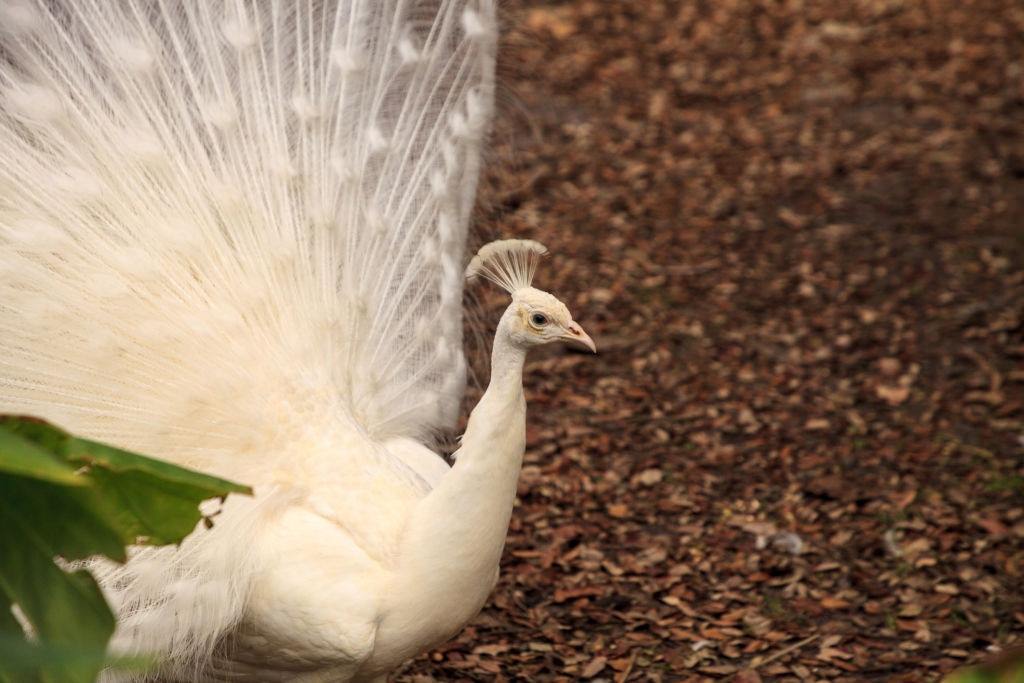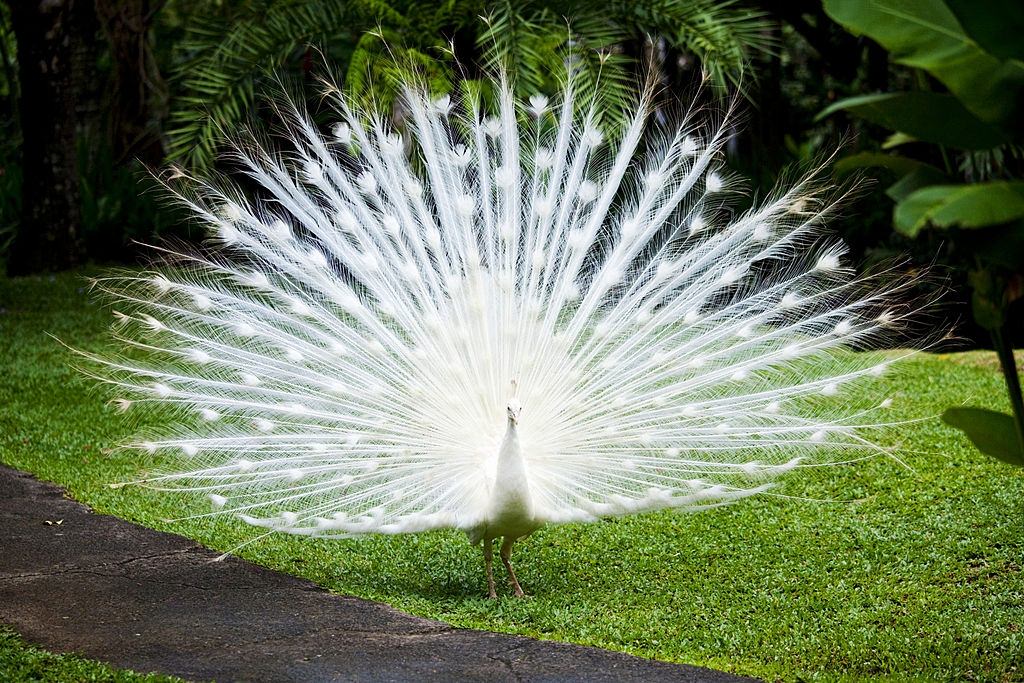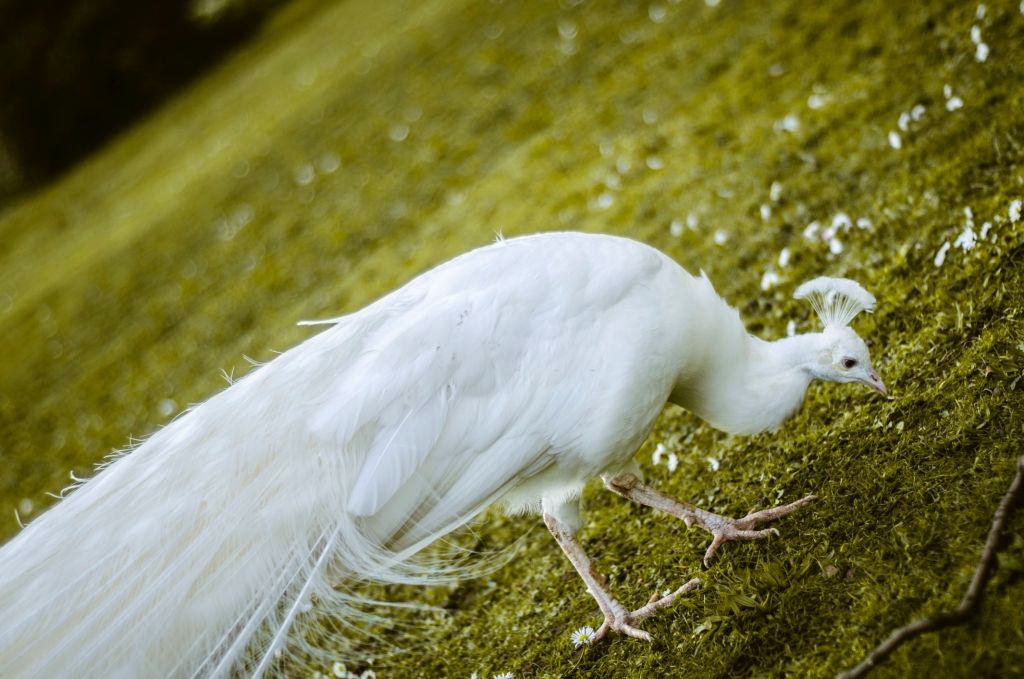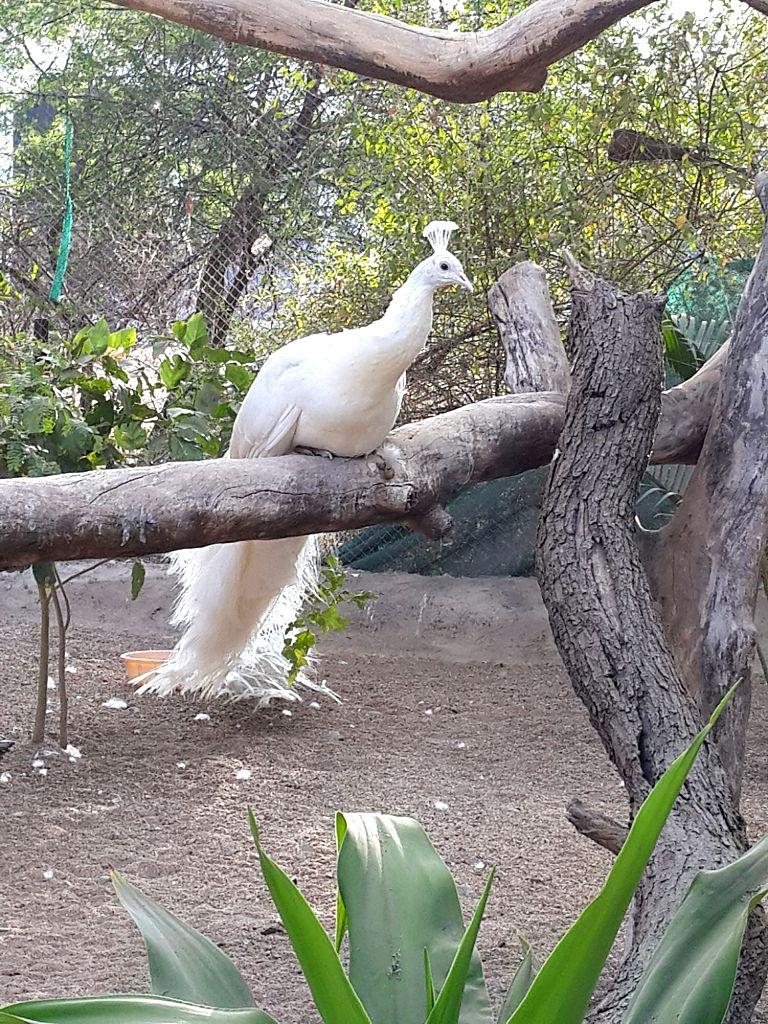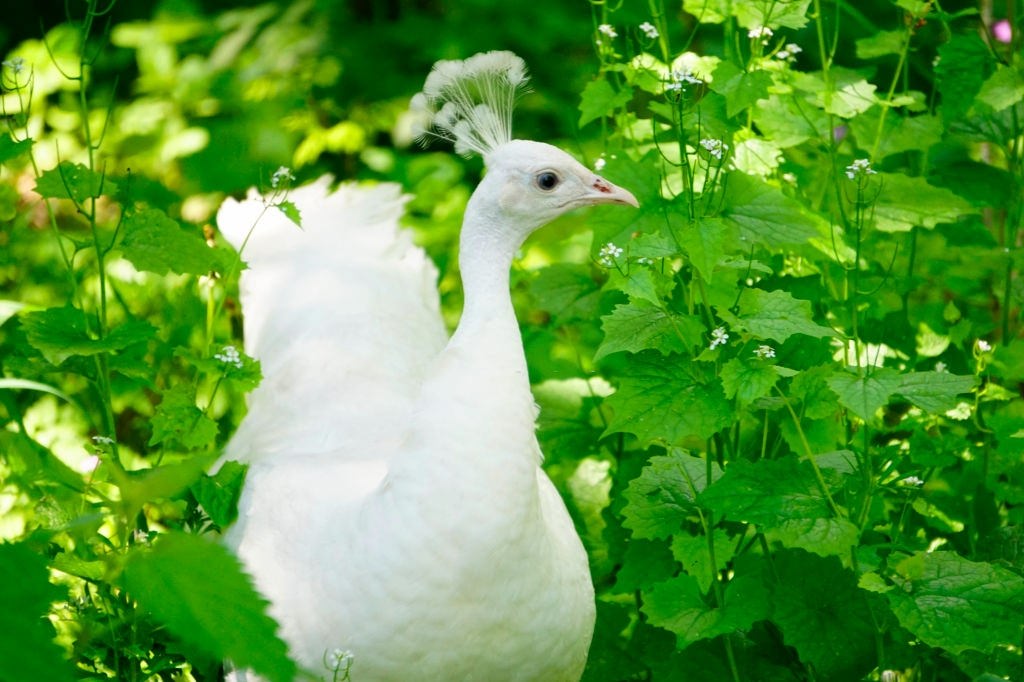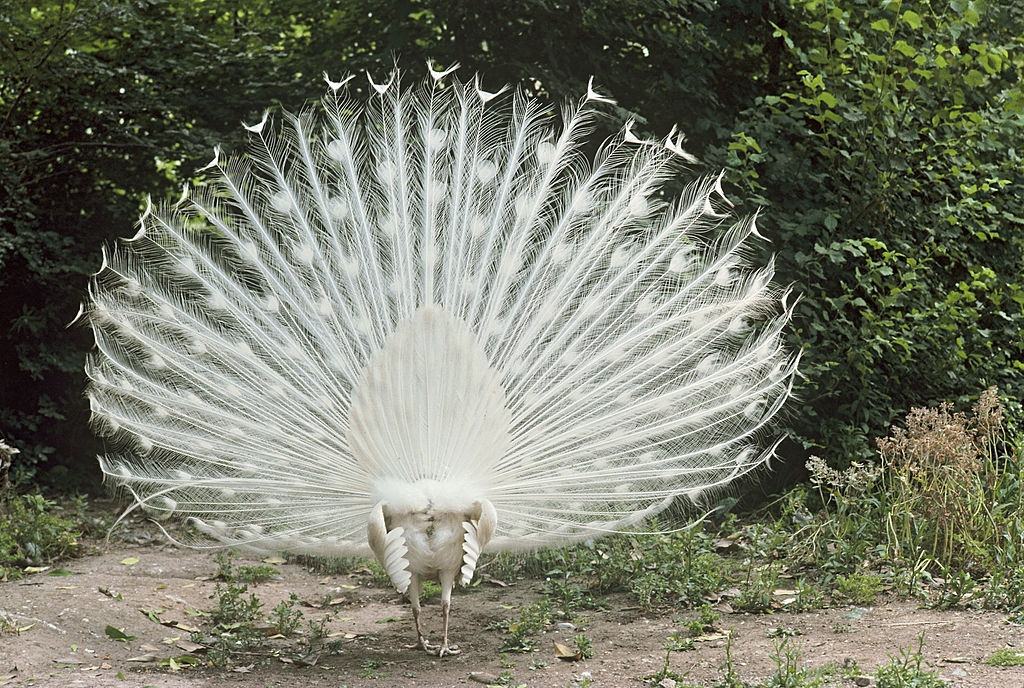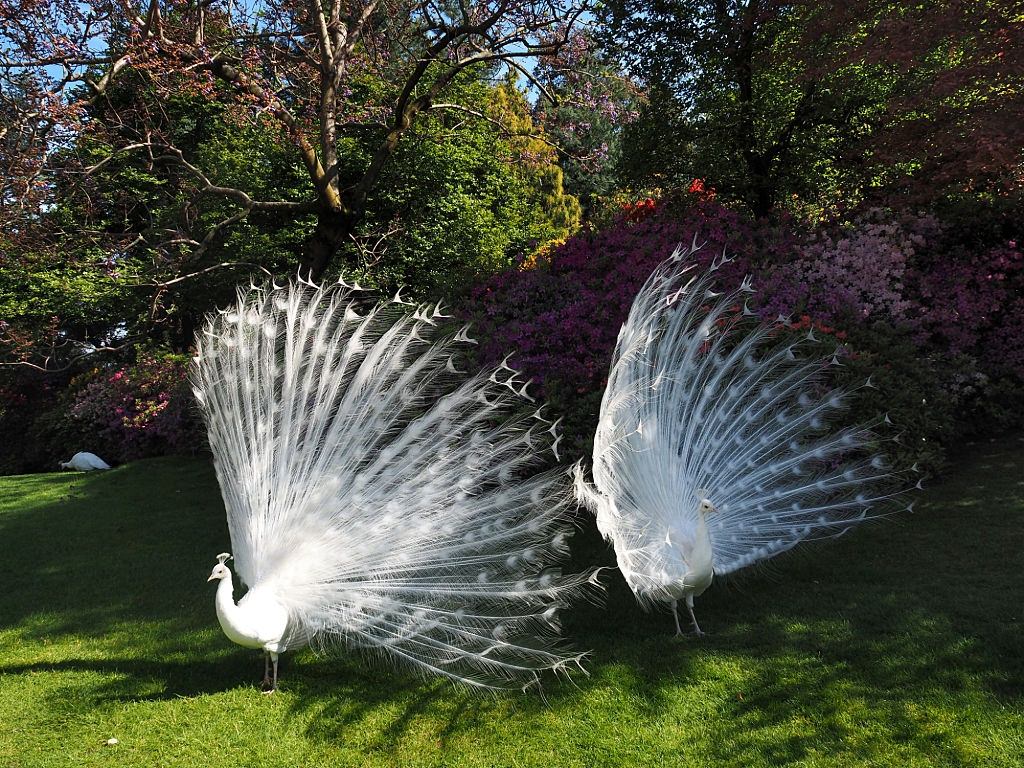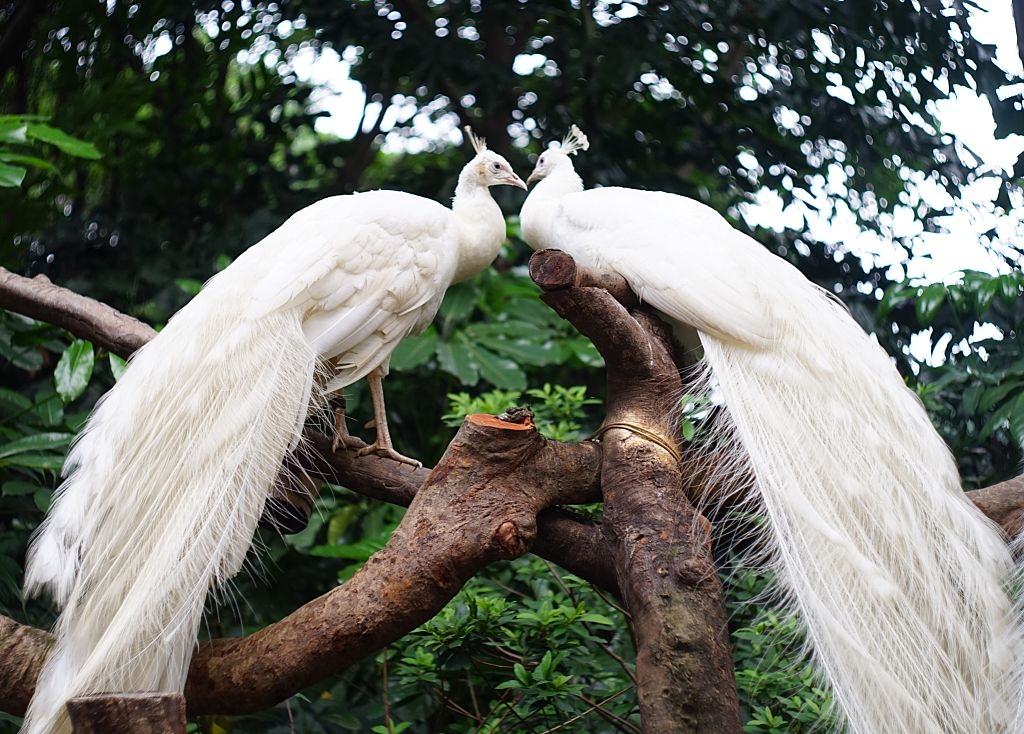Peacocks are one of the most beautiful birds on the planet. The male peacock is called peafowl, females are called peahens, while the babies are called peachicks. Both males and females are called peacocks colloquially. The males have colorful tail feathers that make them even more striking. But even a peacock without all these colors can be a spectacle.
Originally from the Indian subcontinent, the white peacock is now bred around the world in captivity. Whiteness is due to a condition known as Leucism. Several conditions cause a partial loss of pigmentation in animals, known as Leucism. Animals with Leucism might exhibit white, pale, or patchy skin colouration, hair, feathers, and scales, but their eyes are not affected. Unlike the blue peacock, white peacocks carry the gene mutation that causes Leucism. When a white peacock matures, it turns from yellow to white. Partially Leucism affects pied peacocks and leads to patches of color loss. Despite their colorful appearance, they are just as feisty as their colorful counterparts, pecking and kicking anyone who gets too close. Those who train much longer, especially the males, are mesmerizing. Peacocks reach their full length when they are about two years old and have about 150 feathers. While attempting to attract a female partner, their feathers shine in the sunlight.
Male white peafowls are more attractive than female white peahens. White peacock females or white peahens have shorter tails than peacocks. The white peacock has a significant role in a marriage, so its appearance is more attractive. White peacocks have longer and more beautiful tails, creating a stunning appearance to attract peahens. White Peacocks dance while flapping their tails to attract attention from peahens during mating season.
A white peacock is highly prized for its unique appearance. It represents purity, eternal love, and unconditional love. It’s more common to find white peacocks in captivity, and they can live up to 50 years in captivity when they’re kept in captivity. All peafowl species face extinction because of widespread hunting for meat and feathers, egg collection, and chick collection. In addition to habitat loss and human interference, it is also related to human interference. White peacocks can be bred from other white peacocks, and if born in captivity, will produce white peachicks. It is therefore easy to produce white offspring from white peacocks. White peacocks would rarely breed with natural blue colored peacocks in the wild as the mutation is quite rare. This means they would not usually produce white offspring when mated with natural blue colored peacocks.





